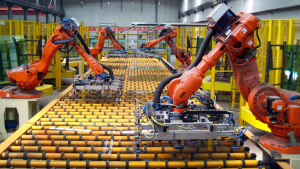
ARC 606: Cybernetic Factory
The Cybernetic Factory takes as its subject the architecture of advanced manufacturing and its integration into local economies and communities.
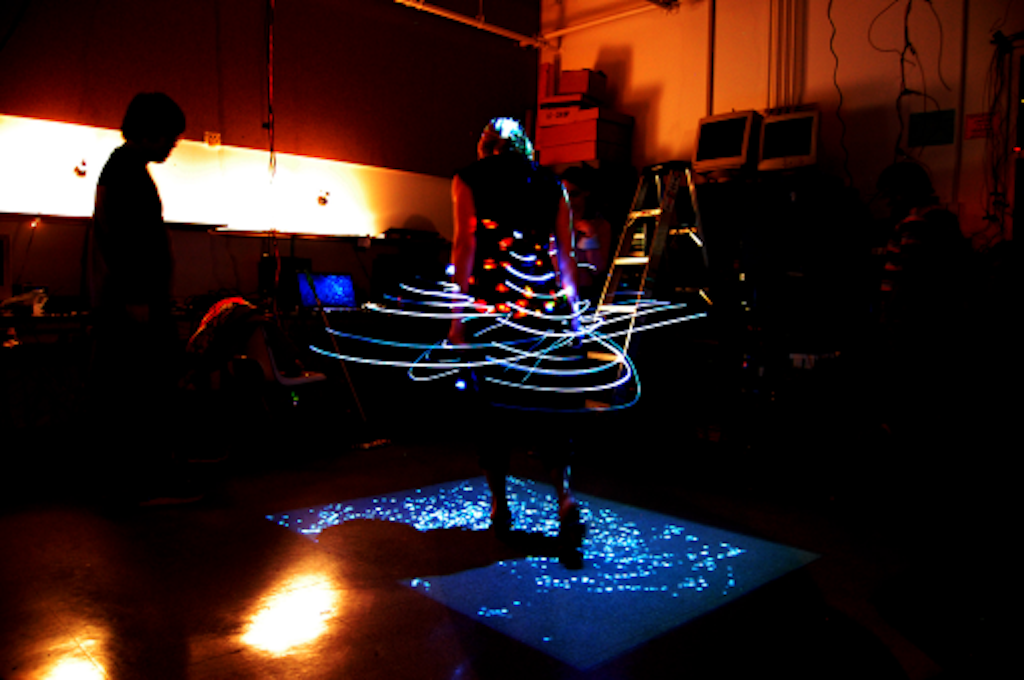
Faculty members affiliated with CAST offer courses through the Situated Technologies Graduate Research Group in the Department of Architecture.
The curriculum engages design experimentation that repositions architecture in an expanded field. The group explores methods of study and conducts experiments that probe the limits of architecture: prototypes, processes, techniques, modes of collaboration, and workflows. It adopts new methods to identify new sites of inquiry, at different scales and within different social and political settings, for an expanded field of practice.
Design studios and seminars result in a wide range of outcomes–buildings, devices, events, infrastructures, tools, workflows, interfaces–and in skillsets that enable students to articulate new agencies for architecture.

The Cybernetic Factory takes as its subject the architecture of advanced manufacturing and its integration into local economies and communities.
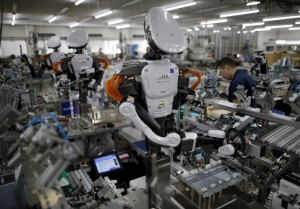
This seminar will survey the changing dynamics between manufacturing, labor, technology and society from the Industrial Revolution to the present.
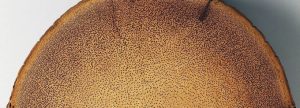
Functionally Graded Materials (FGM) are composites with gradually varying material content.
Instructor: Mark Shepard
ARC 605
Fall 2018
In 1970 Nicholas Negroponte and the Architecture Machine Group (AMG) at MIT produced the installation SEEK for the Software exhibition at the Jewish Museum in New York City. An early attempt at integrating artificial intelligence (AI) with architecture, SEEK consisted of an enclosed Plexiglas environment organized by a landscape of small mirrored blocks, a small colony of gerbils, and a robotic arm that would reconfigure the blocks in response to the rodents’ disruptive behavior. “If computers are to be our friends,” writes Negroponte in the exhibition catalogue, “they must understand our metaphors. If they are to be responsive to changing, unpredictable, context-dependent human needs, they will need an artificial intelligence that can cope with complex contingencies in a sophisticated manner…” The installation was a spectacular failure, however: the software was buggy, the gerbils fought each other and became sick, and the exhibition nearly rendered the Museum bankrupt. Art News critic Thomas Hess wrote at the time, describing the shipwrecked gerbils as covered in their own excrement and cowering under the broken robotic arm, that “artists who become seriously engaged in technological processes might remember what happened to four charming gerbils who also tried collaboration.”
Despite its failures, SEEK did set the stage for experiments in responsive architecture that continue to this day. The re-emergence of AI in popular culture and consumer products–from autonomous vehicles to smart speakers integrating voice-controlled virtual assistants–has renewed an interest in creating so called “intelligent” spaces that are responsive to highly contingent and seemingly unpredictable actions and events transpiring within them. Today, low-cost sensors and cheap microcontrollers are readily available, and powerful APIs for computer vision, machine learning, and neural networks have made the integration of AI with architecture far more accessible than in the early days of the AMG at MIT. This design research studio will investigate the limits of sensing, processing, and actuating physical space through the design, fabrication and development of a full-scale installation that attempts to playfully engage the contingencies of its use and occupation. Mindful of Hess’ warning, we will focus less on making the computer our friend and more on how cohabitating with intelligent machines could lead to spaces that are more subtle, curious, intriguing and ultimately unpredictable.

Instructor: Omar Khan
ARC 619
Fall 2018
This seminar is the first in a two-semester sequence that introduces relevant theoretical and historical models for
research in the design of Situated Technologies. It introduces students to the significant ideas that define the information environment and how they concern architecture and urbanism. Taking a broad interdisciplinary approach the course draws texts from science, engineering, information theory, aesthetics, philosophy, sociology, media, art, architecture and urbanism. It includes primary texts as well as their interpretations, providing a critical examination of the ideas and their influence on technology and society.

Instructor: Jason E Geistweidt
ARC 617 | DMS 606
Fall 2018
As software is woven into the spatial fabric of everyday life, new challenges and opportunities emerge for the design of the built environment. Over the past few decades, computer code has played an increasing role in the production and disposition of space. Code now generates, configures, modulates, conditions, governs, regulates, and activates a wide variety of spaces through which we move on a daily basis. At the same time, the decreasing cost of lower-power microcontrollers and wireless sensor networks, coupled with the proliferation of open source software and hardware initiatives, has brought the design and fabrication of objects, spaces and media that are responsive to their environments to ever-broader communities of architects, artists and designers. Taken together, these conditions present multiple vectors for critical inquiry into the material, formal, social and political dimensions of contemporary architectural practice.
This design research workshop investigates this interweaving of code and space within the built environment through project-based experimentation. It introduces basic concepts and techniques for creating objects, spaces and media that sense and respond to their physical surroundings and the actions and events that transpire there. We will investigate models for spatial interactions with (and through) computers that afford more subtle and complex relations between a range of human and non-human actors. Combining readings, presentations and discussions on the theory of responsive environments in architecture, art and design with a series of hands-on technical workshops in computing methods and techniques, the course provides a critical context for emerging forms of experimental architecture. Topics include fundamental ideas in computing (languages, representations of thought and world), embodied interaction (situated actions, responsive systems), practical aspects of hardware design (electricity, electronics, microprocessors, components, sensors and actuators), functional programming (variables, data types, control structures, functions, objects) and basic networking principles (topologies, protocols). This is an introductory course. No prior expertise in computing required. Curiosity about how things work is a must.

Instructor: Nicholas Bruscia
ARC 605
Fall 2017
All structures, while typically engineered to be rigid, are flexible. Most of us harbor the notion that buildings are not supposed to move, but nothing, according to physics, can be infinitely rigid. Tall buildings are over-engineered to accommodate the parameters of human confidence, which is usually beyond the point of reasonable structural integrity. The majority of commonly used structural materials produce rigidity since they tend to be most durable when they are not being flexed. However, some composite materials offer the possibility for a different kind of durability, as they have properties that allow them to develop internal forces that restore the initial form after deformation occurs by bending or stretching back into position. The studio will explore the scalability of flexible materials, and how we might organize them to produce stable but intentionally flexible architecture.
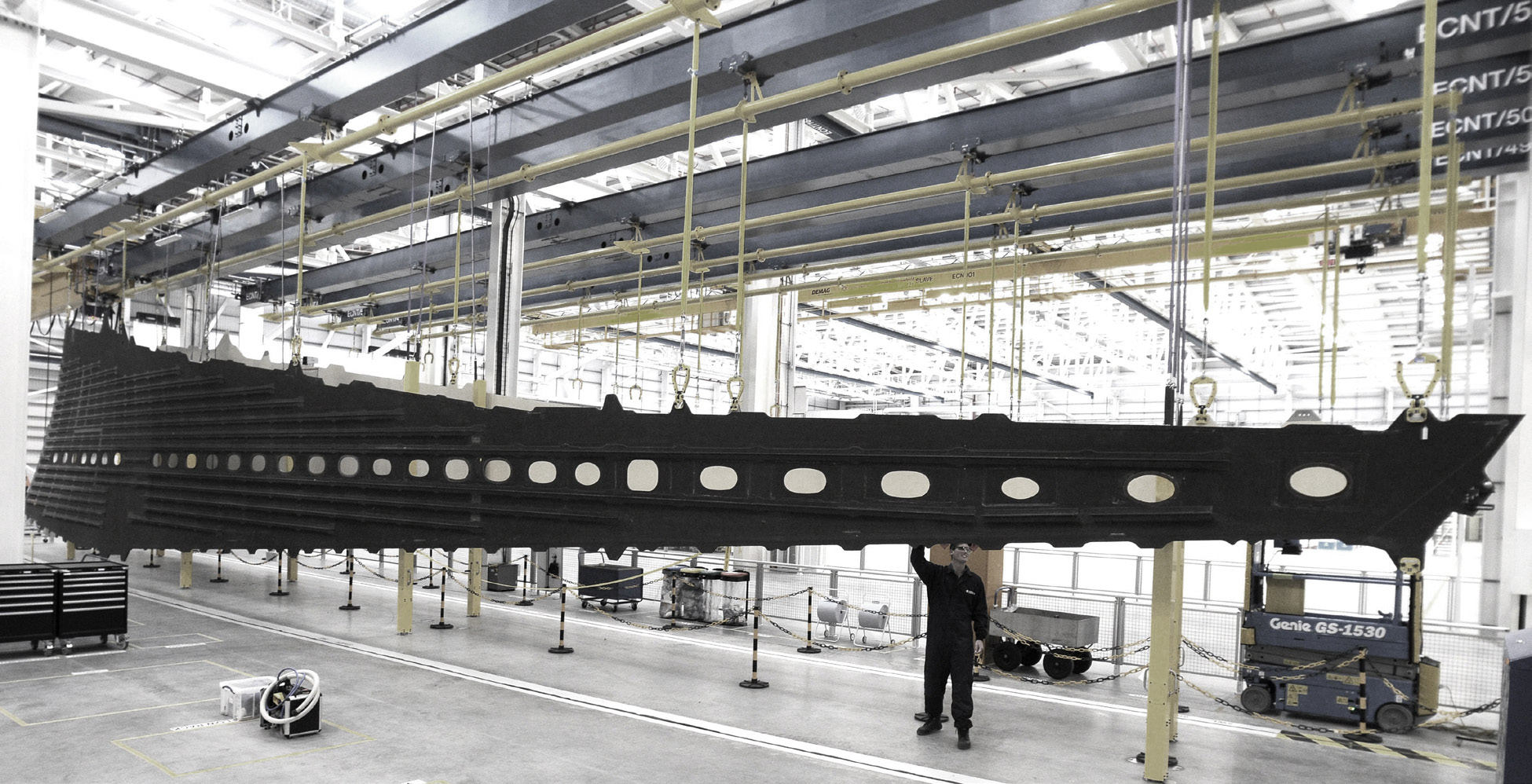
Airbus A350 XWB composite wing cover
Instructor: Omar Khan
ARC 619
Fall 2017
This seminar is the first in a two-semester sequence that introduces relevant theoretical and historical models for
research in the design of Situated Technologies. It introduces students to the significant ideas that define the information environment and how they concern architecture and urbanism. Taking a broad interdisciplinary approach the course draws texts from science, engineering, information theory, aesthetics, philosophy, sociology, media, art, architecture and urbanism. It includes primary texts as well as their interpretations, providing a critical examination of the ideas and their influence on technology and society.

Instructor: Mark Shepard
ARC 606
Spring 2018
This sponsored design research studio will explore the future of the workplace through the creation of a series of design fictions that speculate on the relations between work, space and technology in the near future. We will travel to NYC for a week of site visits to contemporary examples of co-working and other workplaces, and meet with specialists from architectural design, workplace strategy, real estate, and technology firms. Projects produced by the studio will be presented at a half-day workshop in New York at the end of the semester, where students will have the opportunity to engage with invited professionals in articulating a vision for the future of the workplace. Travel and accommodations in New York for the initial site visits and culminating workshop will be sponsored by the UB Innovation Exchange 2018, a new initiative of the School of Architecture and Planning.

Jacques Tati, film still from Playtime (1967)
Instructor: Jordan Geiger
ARC 554
Spring 2018
Over the past century, the space and time of labor has undergone fundamental changes due to many technological, economic, societal and other developments. This seminar will focus on the origins and current trajectories for the space of work, with particular attention to the future of the office as an architectural type but related looks at the construction of other types of productivity. We will read some history of the workspace and consider recent developments of things like free-trade zones, co-working spaces, tele-working, globally outsourced and distributed workforces and what their
architectural consequences look like and might become. Readings and class discussions will be supplemented by frequent assigned film clips and in-class screenings.
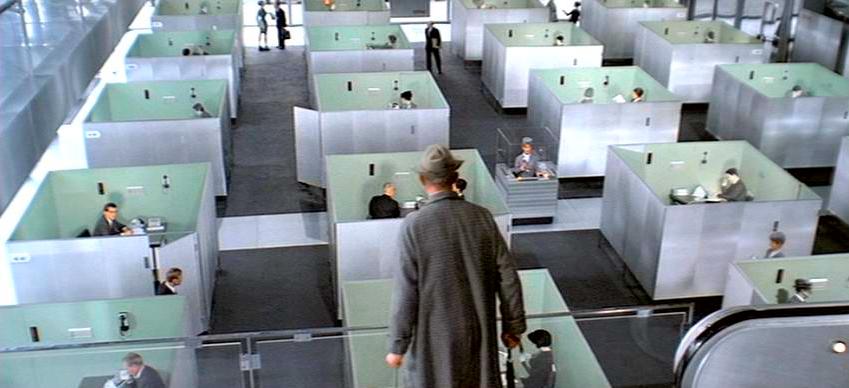
Jacques Tati, film still from Playtime (1967)
Instructor: Nicholas Bruscia
ARC 547
Spring 2018
This techniques seminar introduces students to computational design tools that facilitate movement between physics-based simulation and material prototyping. Students will become familiar with the possibilities of these tools via exercises in parametric modeling, used here as a method to predetermine geometric and numeric relationships between constraints and forces as a way to discover formal variety. Skill-building exercises and in-class workshops will occur prior to research projects. Students will be asked to engage in physical prototyping and testing through both manual and digital fabrication; an essential process in understanding material properties that will ultimately inform on-screen design and production.
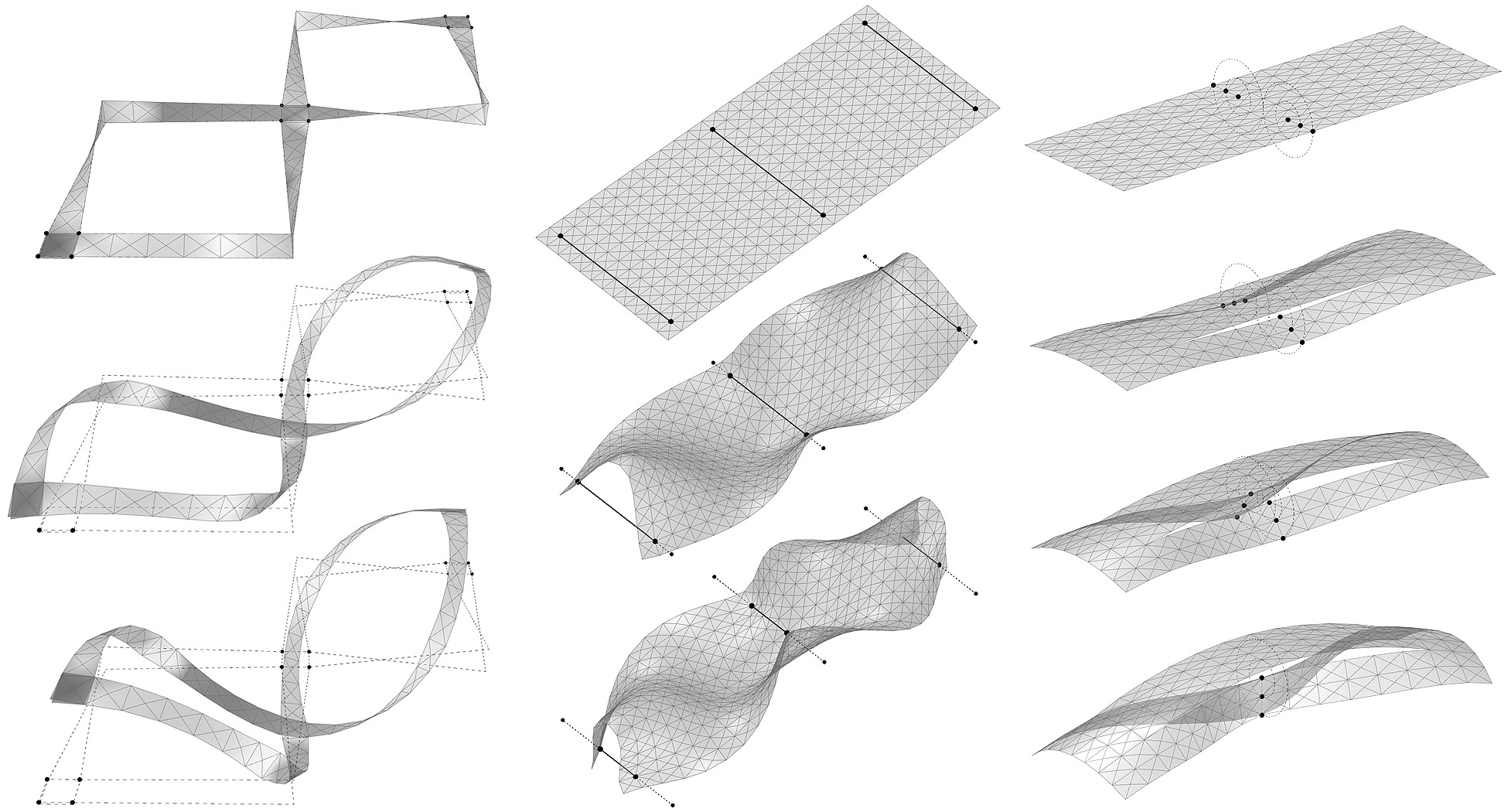
Instructor: Nicholas Bruscia
ARC 605
Fall 2016
The studio will aim to develop proposals for a new athletic arena at the site of the former War Memorial Stadium located in the East Side of Buffalo. Chosen for both its technical and programmatic challenges, research surrounding the arena typology will amount to building proposals driven by spectator experience and student research on form-active* structures.
The studio proposes the arena building type as an ideal platform to gain experience with physics-based simulation tools for both the design of the exterior enclosure and toward the optimization of programmatic requirements. More specifically, the studio will use computational form-finding to design structurally expressive long-span roof canopies, while incorporating other algorithmic tools to analyze interior conditions such as seating arrangements, sight lines, and circulation. A portion of the technical skill building will introduce a workflow associated with the buildability of the exterior envelope under the real-world material and geometric constraints of tensioned membrane (fabric, ETFE, PTFE) and paneled cable-net structures.
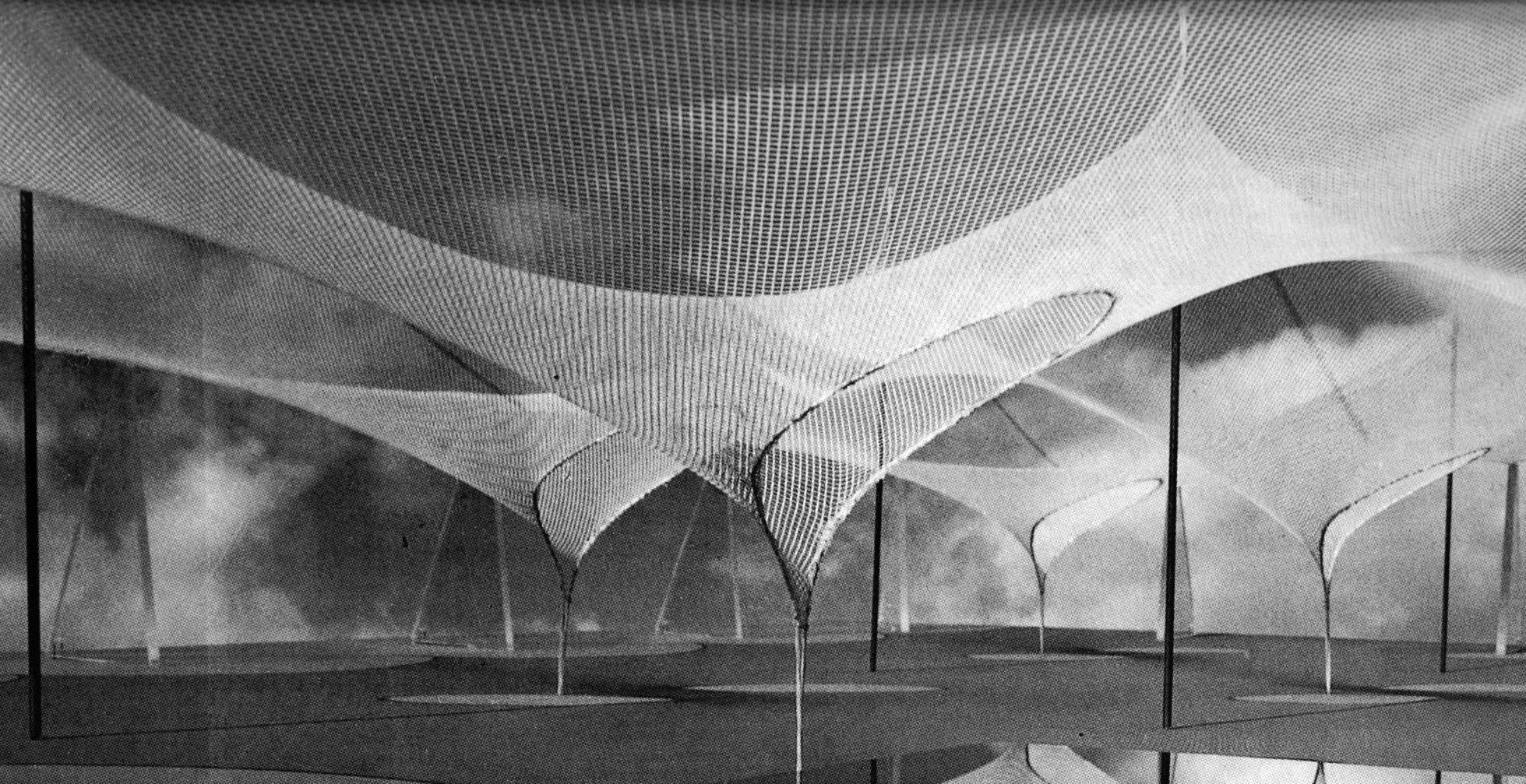
Heino Engel – Structure Systems, 1997 Image scanned from IL 5: Convertible Roofs, University of Stuttgart Institute for Lightweight Structures, 1972
Instructor: Omar Khan
ARC 619
Fall 2016
This seminar is the first in a two-semester sequence that introduces relevant theoretical and historical models for
research in the design of Situated Technologies. It introduces students to the significant ideas that define the information environment and how they concern architecture and urbanism. Taking a broad interdisciplinary approach the course draws texts from science, engineering, information theory, aesthetics, philosophy, sociology, media, art, architecture and urbanism. It includes primary texts as well as their interpretations, providing a critical examination of the ideas and their influence on technology and society.

Instructor: Mark Shepard
ARC 593 | DMS 606
Fall 2016
As software is woven into the spatial fabric of everyday life, new challenges and opportunities emerge for the design of the built environment. Over the past few decades, computer code has played an increasing role in the production and disposition of space. Code now generates, configures, modulates, conditions, governs, regulates, and activates a wide variety of spaces through which we move on a daily basis. At the same time, the decreasing cost of lower-power microcontrollers and wireless sensor networks, coupled with the proliferation of open source software and hardware initiatives, has brought the design and fabrication of objects, spaces and media that are responsive to their environments to ever-broader communities of architects, artists and designers. Taken together, these conditions present multiple vectors for critical inquiry into the material, formal, social and political dimensions of contemporary architectural
practice.
Instructor: Jordan Geiger
ARC 603
Spring 2017
This studio will take up the problem of contemporary domesticity. With Google, Nest, Amazon, Wink and other tech companies already promoting the smart house of the present, we will take a broader view on what domesticity means in the age of the Internet of Things. This is both a social and technological problem as we try to understand the current trends in domestic living and the role- disruptive and productive- that embedded technologies will play. The studio will frame its research around domestic typologies, the social structures they promulgate, domestic technologies and contemporary social media. We will also examine the role that technology plays in reconfiguring domestic sociality. These insights will provide the basis for proposing for future domestic environments.
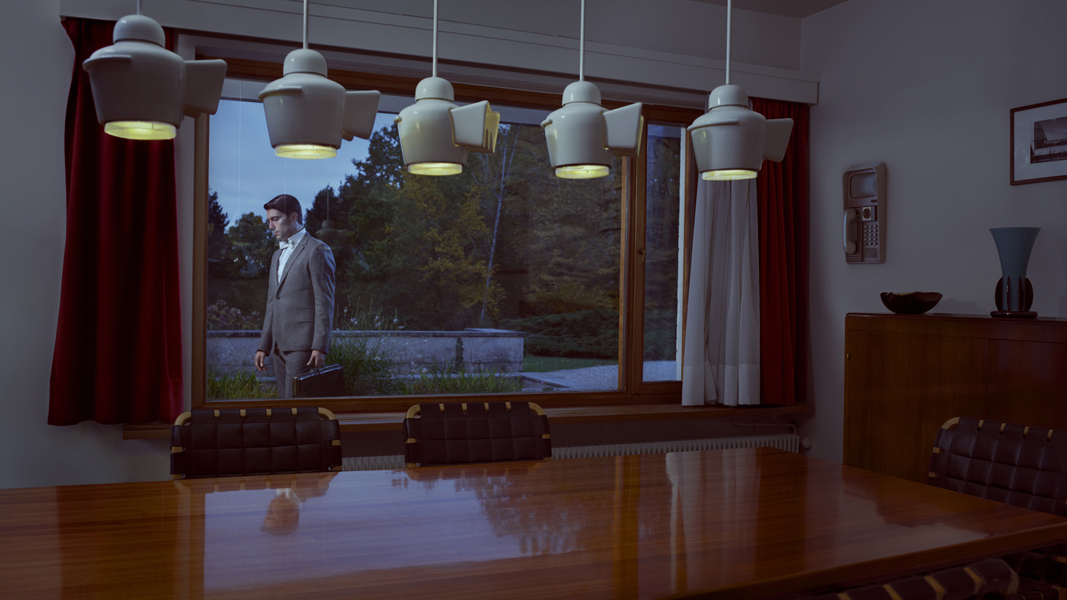
Ben Sandler, Tomorrowland, 2011
Instructor: Nicholas Bruscia
ARC 547
Spring 2017
This techniques seminar introduces students to computational design tools that facilitate movement between physics-based simulation and material prototyping. Students will become familiar with the possibilities of these tools via exercises in parametric modeling, used here as a method to predetermine geometric and numeric relationships between constraints and forces as a way to discover formal variety. Skill-building exercises and in-class workshops will occur prior to research projects. Students will be asked to engage in physical prototyping and testing through both manual and digital fabrication; an essential process in understanding material properties that will ultimately inform on-screen design and production.

Instructor: Nicholas Bruscia
ARC 605
Fall 2014
The studio, Fidelity vs. Tolerance, looks to develop responsive architectural prototypes using computational modeling and simulation in
concert with material testing and prototyping. Central to the research will be a series of discussions and workshops relating the relationship
between the accuracy of on-screen simulations and the performance of the prototype under material constraints, which is to say, the clarity of
the intention vs. the reality of its worldly behavior. The terms, fidelity and tolerance are intended to provoke an evaluation of the computational
processes by which the prototypes are to be designed and fabricated, in addition to their potential applicability and context. Each term has a
dual purpose, and can be each referred to as a metric (a gauge by which something is measured) as well as a social condition (an acceptance
without expectation). For example, a responsive system with low fidelity and high tolerance may be one that is reaching social ubiquity, but
also one that is without the need for extremely minute detailing, suggesting an architectural application at a larger scale.

Drawing from digital simulation: auxetic measures of a re-entrant hexagon pattern at rest and in action _ D.Vrana, N.Bruscia (faculty)
Instructor: Jordan Geiger
ARC 597
Fall 2014
This seminar focuses on relations between architecture, information and computing technologies, and society as they are conditioned by speed: rates of transfer, response, exchange, movement, cognition, and more. Development in the last century has been marked nearly always by new velocities, at times testing or altering human tolerances for construction, for perception, for adaptation, for reliance on shelter and on computational systems. These roles of speed reveal ways that architecture and information systems embody shifts in culture, in technology, and in society – but also shifts in less obvious things like the emergence of global finance and geopolitics. Since late capitalism and the rise of post/industrial economies, these shifts continue as indicators for unprecedented ecological and economic phenomena. Speed, in short, is not neutral or relative but always a function of its circumstance.
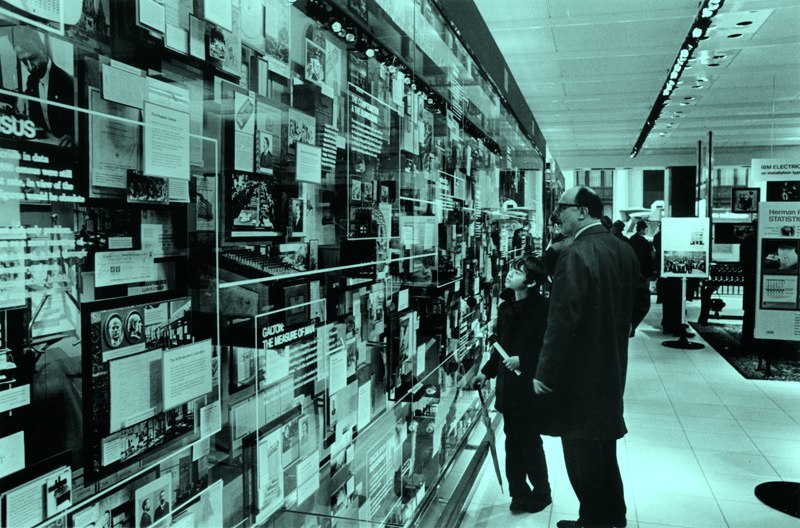
Instructor: Michael Markert (Bauhaus- Universität Weimar)
ARC 593
Fall 2014
This course aims to provide a general overview (German: “Überblick”) of current technologies. We won’t delve too deep into each topic, because knowing too many details may obscure the right decision for the right tools. Besides you don’t have to know everything as long as you know where to look it up. So, we will embrace superficial knowledge and try to gain as much orientation and overview of useful and existing up-to-date technologies, hard- and software, design techniques and anything useful to help you picking the right toolset for your current or next project. Students are encouraged to share their experiences. We all worked with one or the other technology and this is an excellent opportunity for everyone to share our experiences / tips & tricks and learn from each other.
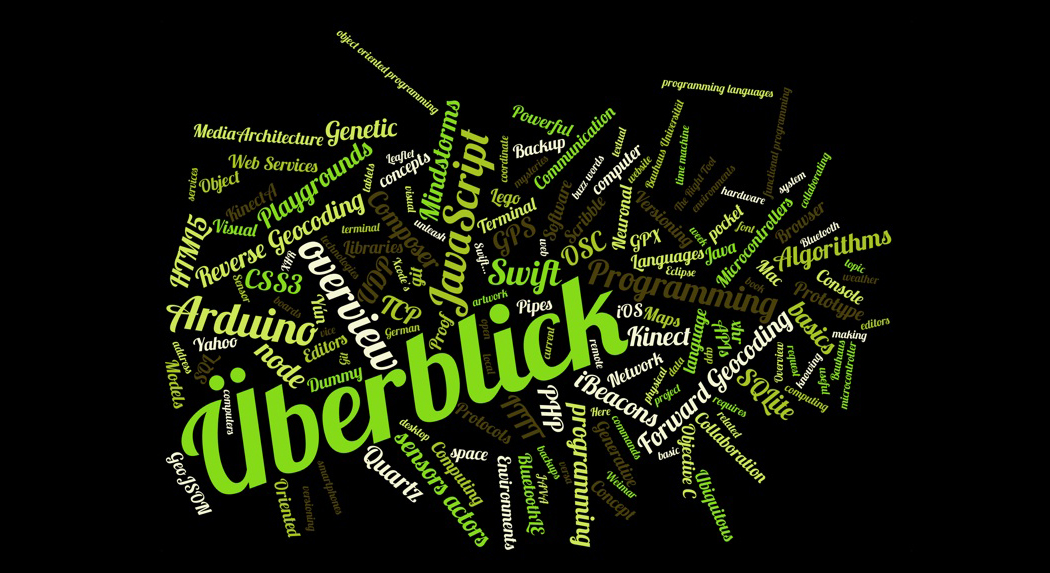
Instructor: Nicholas Bruscia
ARC 547
Spring 2015
This techniques seminar introduces students to current computer aided design tools that facilitate movement between modeling and material prototyping. It will explore methods and techniques of parametric modeling; an approach to design that frames the problem of form-making as an interaction of multiple lateral systems. Integral to the focus of the course is the preparation of digital models and drawings for fabrication and the geometric description of complex surfaces, masses, and linear systems. We will take the topic of structural and environmental performance as themes to be explored through various types of code-based computing and simulations, including scripting in Grasshopper 0.9 (and various associated plug-ins) and Python for Rhinoceros 5. Research projects will engage physical prototyping and testing through both manual and digital fabrication; an essential process in understanding material properties, that will ultimately inform on-screen design and production.
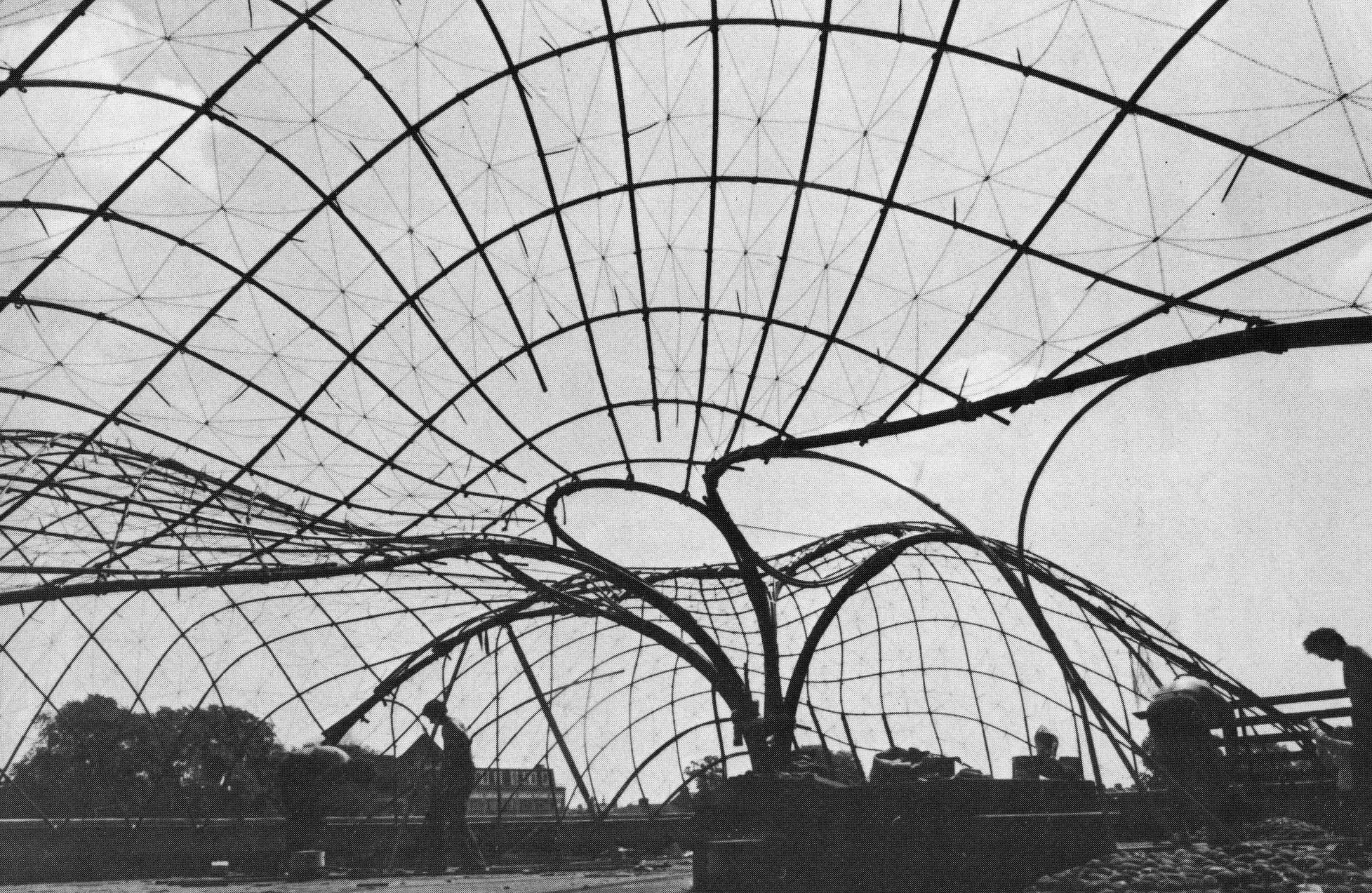
Instructor: Mark Shepard
ARC 606
Spring 2015
This trans-disciplinary studio will focus on contemporary urban agglomerations through the ecologies of human, natural and artificial systems that constitute them. We will examine the complex relations between people, the natural world, and the built environment and explore how they are influenced, shaped and mediated by a variety of media and material interventions. Topics include: the constructed landscape and the integration of engineering systems within large-scale regional infrastructure; the deployment of sensor networks, robotic actuators, and digital fabrication techniques in hybrid structures that engage the natural environment in more responsive ways; and the role of distributed sensing and computation, big data and open systems, social media and other participatory platforms in aggregating small-scale, local interactions into larger systems exhibiting network effects at a regional scale. Emphasis will be placed on transnatural, bio-mimetic and other post-sustainable strategies for addressing social and environmental change within urbanized regions. The studio will base its research within the context of the Netherlands, a country with a long history of shaping the natural environment at a regional scale for human habitation. We will specifically focus on the Randstad, a conurbation anchored by four closely linked metropolitan and industrial areas – Amsterdam, Rotterdam, The Hague and Utrecht. With a population of 7,100,000 and an area of approximately 8287 km², the Randstad is one of the most densely populated and meticulously planned conurbations in Europe.

Car breakdowns in the Netherlands, from Netherlands From Above, 422 South
Instructor: Jordan Geiger
ARC 605
Fall 2013
The fall studio in Situated Technologies asks what new architectural issues arise around excess. How do spaces and times of excess appear and transform today? How do they come about with both sensory and economic surplus – in spaces of pleasure, of leisure, and more? What roles can responsiveness, including responsive technologies play – in reclaiming leftover, or excess, architectures past; but also in creating new experiences that might be deemed excessive? How do we design with and for excess architecture in all its ambivalent qualities?

“Magic Mirror,” Prada Epicenter NYC. IDEO/OMA, 2001
Instructor: Omar Khan
ARC 619
Fall 2013
This seminar is the first in a two-semester sequence that introduces relevant theoretical and historical models for research in the design of Situated Technologies. It introduces students to the significant ideas that define the information environment and how they concern architecture and urbanism. Taking a broad interdisciplinary approach the course draws texts from science, engineering, information theory, aesthetics, philosophy, sociology, media, art, architecture and urbanism. It includes primary texts as well as their interpretations, providing a critical examination of the ideas and their influence on technology and society.

Instructor: Marc Böhlen
DMS 555
Fall 2013
This course gives students a media-centric overview of concepts and technologies underlying the Internet of Things (IoT). The course has two separate but related parts. One part is discursive and seeks to position the IoT as a new kind of design challenge, a next step in ‘urban design’ that knows no national boundaries. In this approach we will focus on the IoT as an opportunity for data interventions in the public realm. The second part addresses some of the important technologies enabling the IoT, including data collection, programming and analysis. Students will be exposed to data acquisition through microprocessors and sensors (Arduino and Raspberry Pi), database programming (Postgresql and Python) and server side data management (cloud services). Students will work in teams to conceive an IoT concept and then implement particular aspects of the design as a prototype. Projects presented at the end of the semester are evaluated by their conceptual strength as well as by their implementation details.
Instructor: Mark Shepard
ARC 606 | DMS 605 + 611
Spring 2014
“Networked ecologies embody the dominant form of organization today, the network, but these networks can be telematic, physical, or even social. What matters is that we do not think of these ecologies as discrete terrains as Banham did, but rather as the sort of networks that artist Mark Lombardi drew inextricable and impossible, like balls of yarn after visitation by a litter of kittens.”
-Kazys Varnelis, The Infrastructural City: Networked Ecologies in Los Angeles
Yes, our lives are increasingly entangled with a variety of networks at a variety of scales. But despite the kittens, we can still attempt to untangle them in an effort to better understand them. Mapping networked ecologies is by no means new. Yet when doing so, unexpected associations often emerge, and new avenues for intervening within them present themselves.
Instructors: Hadas Steiner | Omar Khan | Jordan Geiger
ARC 590
Spring 2014
The seminar explores evolving ideas of physical and data nets and networks as they relate to architecture and urbanism, historically and since the advent of pervasive computing technologies. Taking a broad interdisciplinary approach the course draws texts from science, engineering, information theory, aesthetics, philosophy, sociology, media, art, architecture and urbanism. It includes primary texts as well as their interpretations, providing a critical examination of the ideas and their influence on technology and society. The course will explore three blocks of content, loosely looking at notions of habitat and habitation as they have been conditioned by ecological and technological discourse; network topologies and the emergence of cross-scalar human-computer interactions that range from tiny material innovations to the influence of orbital satellite networks on our built environment. The course will serve as a counterpoint to concerns around “network ecologies” to be addressed within the STRG studio, but will also be of interest to students interested in related matters of urbanism, ecology, human factors and material innovations in architecture.
Instructor: Nicholas Bruscia
ARC 547
Spring 2014
This techniques seminar introduces students to current computer aided design tools that facilitate movement between modeling and material prototyping. It will explore methods and techniques of parametric modeling; an approach to design that frames the problem of form-making as an interaction of multiple lateral systems. Integral to the focus of the course is the preparation of digital models and drawings for fabrication and the geometric description of complex surfaces, masses, and linear systems. We will take the topic of structural and environmental performance as themes to be explored through various types of code-based computing and simulations, including scripting in Grasshopper 0.9 (and various associated plug-ins) and Python for Rhinoceros 5. Research projects will engage physical prototyping and testing through both manual and digital fabrication; an essential process in understanding material properties, that will ultimately inform on-screen production and preparations.

Tryton side branch auxetic stent